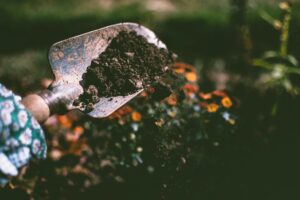If you’ve ever wanted to bring some of the tropics into your home, Monstera Peru is the perfect choice.
The Monstera Peru, also known as the Monstera Karstenianum, is a tropical plant with a viny growth habit like other plants of the Monstera genus.
However, this unique plant differs from other Monstera plants with its unfenestrated dark green leaves.
As the name suggests, this Monstera plant originates from Peru and prefers warm temperatures like most tropical plants, making it a great indoor plant for both the summer and winter months.
Monstera Peru care is not complex and is an excellent plant for beginners.
As long as you know what growing conditions a Monstera Peru prefers, your plant will be happy—and it will be easier to care for than some other plants in this article. We will outline how to care for this gorgeous plant from the tropical regions!
Monstera peru is a beautiful tropical plant, with large leaves that look like a smaller version of a banana tree. The leaves are green and covered with small bumps on their surface. The plant prefers full sunlight, so ensure you have plenty of sunlight through your window. This tropical plant also likes mild temperatures and regular watering.
You can easily grow Monstera perus at home by following the steps below:
Step 1: Plant the seed in potting soil or sand mix. Make sure that there is enough space between each leaf because it likes room to grow!
Step 2: Keep your Monstera Peru away from direct sunlight (it may burn). Use fluorescent lights or grow lights if you can’t find enough sun
If you’re looking for a plant that will make your room feel like the tropics, look no further than the Monstera Peru.
This tropical plant prefers a warm environment with enough humidity, but it can handle colder temperatures too.
It likes to be kept near room temperature (65-80 degrees Fahrenheit) and should be kept out of direct sunlight. If you keep it indoors, the growing season can extend throughout the year.
The Monstera Peru is not a fussy plant—it can tolerate most room environments! Bathrooms are great locations for this plant because their humidity levels resemble those found in jungles.
Monstera plants are an excellent addition to any home or office, but they do require a little extra care and attention.
The Monstera Peru needs a little more direct sunlight than other Monstera varieties. While it can tolerate a bit of light in the afternoon, it is best to avoid too much direct sunlight during the day.
If you are wondering how much bright light is enough sunlight, it is best to be conservative. Although Monstera Peru appreciates indirect sunlight, it can only tolerate about 30 minutes of direct sunlight each day.
Monstera Peru is not necessarily a fast-growing plant but will grow faster when exposed to more sunlight (be sure it is indirect light).
Like other similar plants grown indoors, the Monstera Peru will grow at a very slow rate if in a shady environment with little sunlight.
When you have a Monstera perus, it’s important to keep the soil evenly moist but not wet.
You can do this by simply laying a wet cloth over the top of your soil or by watering only when the top 1-2 inches become dry.
You can tell when your plant is getting too much water because its leaves will begin to look burnt.
If your plant’s foliage looks burnt, it may be that your tap water has too much chlorine.
Too much-chlorinated water leads to salt buildup, which leads to your plant getting dehydrated. In these cases, try using distilled water for your plant.
When you have a Monstera perus, it’s important to keep the soil evenly moist but not wet.
You can do this by simply laying a wet cloth over the top of your soil or by watering only when the top 1-2 inches become dry.
You can tell when your plant is getting too much water because its leaves will begin to look burnt.
If your plant’s foliage looks burnt, it may be that your tap water has too much chlorine.
Too much-chlorinated water leads to salt buildup, which leads to your plant getting dehydrated. In these cases, try using distilled water for your plant.
Does Monstera Peru Like Direct Sunlight or Not?
Our Monstera Peru thrives best in bright indirect sunlight, typically for 5 to 8 hours. You can use grow lights or artificial lighting, though they might be harder to maintain if you live in colder weather. It can withstand low light; as a result, it will grow much more slowly.
Don’t put your monstera plants in windows and doors that will get direct sunlight.
Wanna know why Monstera doesn’t want direct sunlight? Click here
When to Water a Monstera Plant?

We don’t want to drown or overwater our Monstera Plant, so please be cautious when watering it. Because Monstera is a tropical plant and requires moist soil to grow, you should water it as soon as the top 5 cm (2 inches) of the soil becomes dry. It’s crucial to avoid letting the soil dry out too much because this can lead to the leaves of the plant drooping. The soil should constantly be moist but never soggy. Simply dipping your finger in and using a moisture meter will allow you to confirm it.
Yellow, brown, or black Monstera leaf tips
When the leaf tips turn yellow, brown, or black, you may tell if the plant is being overwatered or underwatered by observing how the leaves look.
If you notice yellow edges, your leaves may be overwatered. Yellow, twisted lower leaves can potentially be an indication of underwatering.

If it’s Brown edges, It can go both ways. By touching the browning leaf, you may determine which was submerged if it feels light and crisp. Overwatered plants appear limp and floppy.
And Black edges, Overwatering is the most common cause of the black spots that appear on leaves, but underwatering can also be the cause.
Which soil should you use for your Monstera Peru?
The Soil for our monstera is one of the important things we should know. So, which soil does Monstera prefer?

Monstera Peru prefers moist soil as well as soil with high organic content, although they struggle in wet soil. As it will help them to receive the right amount of moisture and drainage, plant your Monstera in a container with a drainage hole and well-draining soil that keeps moisture without becoming wet. Our Monstera plant will be happy and healthy as a result of this since extra water will be able to drain out of the pot.
If you ever accidentally overwater your Monstera a few times, you may also add pebbles or other objects to help it absorb the extra moisture.
What humidity is suitable for a Monstera plant?
Did you know that one of the best ways to care for your monstera plant is to give it a little warmth?
Monstera Peru enjoys high humidity. In rooms with moderate temperatures, most indoor plants, including the Monstera, flourish (not too cold nor too hot). Monstera is sensitive to freezing temperatures, therefore sudden temperature fluctuations might startle them. Since shocking Monsteras could result in death, it is advisable to keep away from this situation. So, Having a humidifier in your home is also a fantastic option.
If you’re thinking about repotting your Monstera plant, you might wonder if it’s necessary.
The answer is yes.
To allow Monstera Peru plenty of room to develop, it’s usually a good idea to buy a pot that is somewhat larger than its roots. You will need to report your Monstera roughly every two years if it thrives and develops steadily. If you feel that it has reached its full size and do not want it to continue growing, you can cease repotting.
As you may have noticed, the Monstera grows naturally horizontally as it has been growing for months. This is where the moss pole comes in to train the Monstera to grow vertically (taller) instead of horizontally (wider).
Does the Monstera plant require fertilization?
Yes, Monstera Plant requires a little fertilization because fertilizer is a vitamin for our plants. You should fertilize your once a month your Monstera Plant during spring and summer, it grows quickly and gets new leaves.
And during fall and winter, you shouldn’t fertilize it at all. This allows the plant to unwind and prepare for the upcoming growing season.